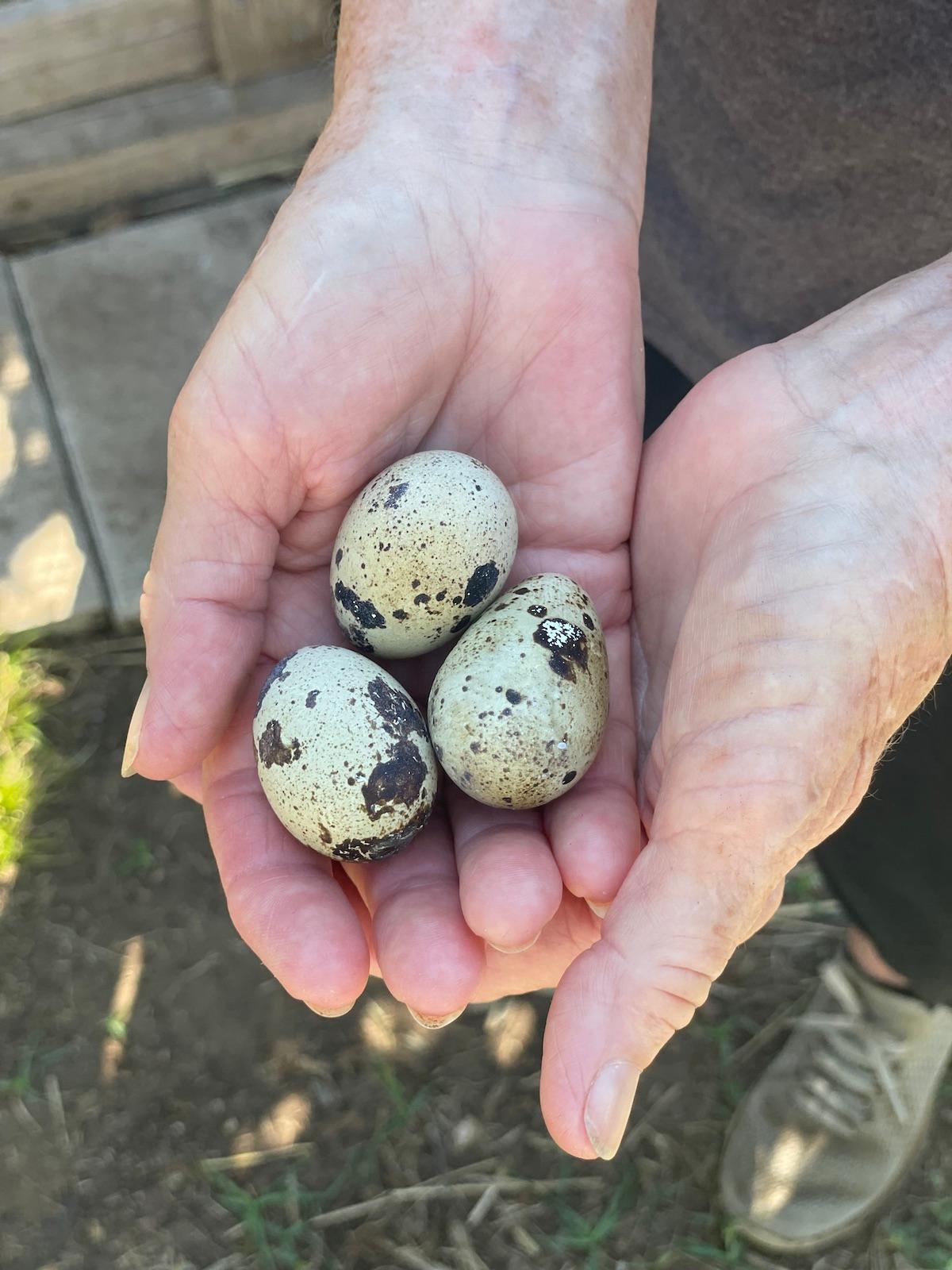A growing number of dog owners are rethinking what goes into their pets’ bowls. Processed kibble and packaged treats—once considered the most convenient options—are giving way to fresh, whole ingredients like meats, vegetables, and now, quail eggs.
At first glance, tiny speckled eggs might seem like an unexpected addition to a dog’s diet. But as interest in raw and minimally processed foods continues to rise, quail eggs have earned attention from pet owners looking for simple, natural ways to nourish their dogs.
This shift is part of a broader movement toward transparency and whole-food nutrition in the pet industry. The global raw pet food market was valued at roughly US $3.5 billion in 2024 and is projected to reach nearly US $9.8 billion by 2033, growing more than 12 percent per year (Business Research Insights, 2024). At the same time, about 70 percent of dog owners say they’re open to novel proteins in pet foods (Pet Food Industry, 2023). Together, these trends show why farms and consumers alike are looking beyond traditional proteins to smaller, sustainable options like quail.
For farms, this change has practical benefits too. Eggs that are undersized or surplus can find new purpose as nutritious pet supplements—reducing waste while connecting local agriculture to everyday life.
🥚 A Tiny Egg With Big Benefits
Quail eggs are small, delicate, and naturally rich in nutrients. Each one contains protein, healthy fats, and trace minerals such as selenium and zinc—all in a compact, easy-to-handle form.
What began as a niche idea among raw-feeding enthusiasts has become part of a wider trend toward fresh, whole-ingredient pet diets. Unlike most commercial treats, quail eggs come directly from small farms with minimal processing, linking dog owners more closely to the source of their pets’ food.
👉 Curious how quail farming differs by species? Read Coturnix vs Bobwhite: What’s the Difference?
🧬 Why Dog Owners Are Making the Switch
1. Balanced nutrition in a small package
Quail eggs are rich in vitamins A, D, and B12, as well as omega-3 fatty acids that support skin, coat, and joint health (American Kennel Club, 2023). Because they’re small, owners can offer them occasionally without disrupting a dog’s main diet.
2. A gentler choice for sensitive dogs
Some dogs who struggle with chicken or beef proteins tolerate quail eggs well. Their distinct amino-acid profile makes them a useful option in allergy-elimination diets or as a limited-ingredient protein source.
3. Easy to portion and prepare
Each quail egg contains about 14 calories, making serving sizes simple to adjust. Large dogs may enjoy one daily; smaller breeds might have one a few times per week as a topper or reward.
4. A way to support sustainable farming
When pet owners buy eggs directly from small farms, they help reduce waste and keep more dollars in rural communities. For producers, the pet market offers a steady outlet for eggs that fall outside grocery-store standards—helping farms make full use of what they raise (Texas A&M AgriLife Extension, 2022).
🏡 How Owners Use Quail Eggs
Quail eggs can be served raw, soft-boiled, or fully cooked. Some owners freeze them for later use or peel and dice them as training treats. Common uses include:
- Mixing a raw or cooked egg into kibble as a topper
- Offering a chilled or frozen egg for enrichment on warm days
- Using hard-boiled eggs as high-value training rewards
- Rotating into limited-ingredient or raw diets for variety
Most veterinarians recommend introducing them gradually and watching for tolerance. For healthy adult dogs, a few eggs per week is typically well within balance.
🌾 Where They Come From
Across Texas and other regions, small farms are finding steady demand for quail eggs from both people and pet owners. Hideaway Hatchery in Pecan Gap, for example, raises Coturnix quail and offers hatching eggs, table eggs, and balut for diverse markets.
Demand from pet owners helps farms like these diversify their income and minimize waste. A cracked or undersized egg might not fit grocery standards—but for dogs, it’s perfectly nutritious. Each carton sold locally keeps more value close to home.
Meanwhile, the global quail-egg market is also expanding—valued at about US $1.2 billion in 2023 and projected to reach US $2.1 billion by 2032 (Data Intelo, 2023). It’s a small but steady signal that specialty-egg production is on the rise.
👉 For a look at quail eggs in the kitchen, visit Quail Eggs in Korean Cooking: Tiny Eggs with Big Flavor
💡 A Note on Safety
As with any raw egg, standard food-safety practices apply. Responsible farms wash, store, and handle eggs carefully, and many hold NPIP certification for flock health (NPIP, 2024).
Owners who prefer extra precaution can cook or freeze eggs before serving—especially for puppies, seniors, or dogs with immune concerns.
👉 Learn more about safe storage, washing, and handling in How to Handle Quail Eggs Safely
🐶 Final Thoughts
The rise of quail eggs in dog nutrition mirrors a broader shift toward simplicity and connection—between people, their animals, and the farms that feed them.
For some, it’s about better ingredients. For others, it’s about supporting local producers. Either way, adding a tiny speckled egg to a food bowl has become one more way to strengthen the link between agriculture and home.
🔗 Related Reading
- Coturnix vs Bobwhite: What’s the Difference?
- How to Handle Quail Eggs Safely
- Quail Eggs in Korean Cooking: Tiny Eggs with Big Flavor
- Thinking About Raising Quail? What to Know Before You Start
📚 References
- American Kennel Club (2023). Can Dogs Eat Eggs?
- Business Research Insights (2024). Pet Raw Food Market Report 2024 – 2033.
- Data Intelo (2023). Global Quail Egg Market Report 2023 – 2032.
- NPIP (2024). National Poultry Improvement Plan – Program Standards.
- Pet Food Industry (2023). Trends in Novel Proteins: What Pet Parents Will Pay For.
- Texas A&M AgriLife Extension (2022). Raising Coturnix Quail.





